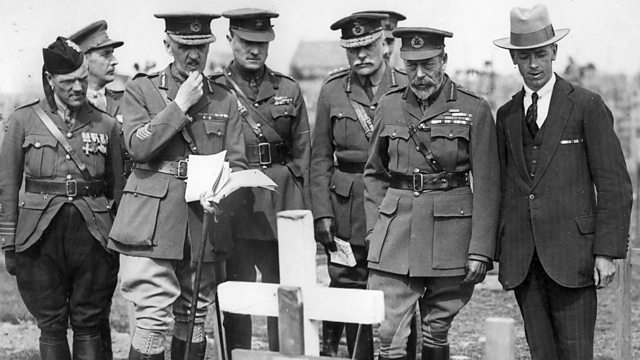Amberley, Gloucestershire: Ensuring The Fallen Were Not Forgotten
The man who fought to ensure WW1 heroes were remembered
Too old to be accepted for army duty, Fabian Ware arrived in France in command of a mobile unit of the British Red Cross in September 1914. He was quickly struck by the lack of any organisation responsible for the marking and recording of the graves of fallen soldiers and became determined that this should change.
With his persistence, the War Office realised that proper care of the war graves would boost the morale of troops at the front and comfort relatives at home. The work that Ware had started of recording and maintaining graves was recognised with the foundation of the Graves Registration Commission in 1915, which became a part of the army.
As early as 1916, Ware received help from horticulturalists at Kew and from the most famous architects of the day on how the cemeteries and memorials should be designed to best commemorate the sacrifice of Commonwealth forces. During this time he was campaigning ceaselessly for an official organisation to be set up to do this.
On 21 May 1917, his diligence was recognised when the Imperial (now Commonwealth) War Graves Commission was established by Royal Charter with Ware as its vice-chairman.
During the war, Fabian Ware was twice mentioned in despatches and ended the war as a Major-General.
In 1920 he became a Knight of two orders in recognition of his tireless work during the Great War. After the war he explained his motivation saying: "Common remembrance of the dead [of the Great War] is the one thing, sometimes the only thing that never fails to bring our people together."
In 1921, the Commission built three experimental cemeteries. Forceville in France was considered the most successful. Garden designer Gertrude Jekyll advised on the planting and the architects created a walled cemetery with uniform headstones in a garden setting. Blomfield's Cross of Sacrifice and Lutyens' Stone of Remembrance were the formal features. After some adjustments, Forceville became the template for the Commission's building programme.
Over the course of the decade over 2,400 cemeteries were constructed in France and Belgium, while work progressed in Italy, Egypt, Palestine, Macedonia, Mesopotamia (Iraq) and on the Gallipoli Peninsula. The pace of building was extraordinary and the energy brought by the individual architects gave character and often great beauty to the cemeteries they built.
Major-General Sir Fabian Ware died on 29 April 1949 and is buried in Holy Trinity Churchyard, Amberley where his grave is marked by a Commission headstone.
The Commission continues to preserve its cemeteries and memorials and encourage the act of remembrance. Occasionally military remains are found - a human reminder of the reason the Commission came into being and why its work is still important today. These casualties are buried with honour in one of the Commission's war cemeteries.
In 2009, the discovery of 250 Australian and British casualties from the Battle of Fromelles required the construction of an entirely new cemetery, Fromelles (Pheasant Wood) Military Cemetery. This was unveiled in 2010.
Renovation and maintenance forms a major part of the Commission’s work. Each year around 20,000 headstones are either replaced or repaired by its staff. The commission says that by preserving the memory of the dead with simple dignity and true equality, the Commission hopes to encourage future generations to remember the sacrifice made by so many.
Location: Trinity Churchyard, Amberley, Gloucester GL5
Image shows Major General Sir Fabian Ware with King George V at Tyne Cot Cemetery in Belgium
Photograph courtesy of the Soldiers of Gloucestershire Museum
Presented by Richard Atkins
Duration:
This clip is from
Featured in...
![]()
Βι¶ΉΤΌΕΔ Radio Gloucestershire—World War One At Βι¶ΉΤΌΕΔ
Places in Gloucestershire that tell a story of World War One
![]()
Memory—World War One At Βι¶ΉΤΌΕΔ
Memorials and the commemoration of wartime lives
More clips from World War One At Βι¶ΉΤΌΕΔ
-
![]()
The loss of HMY Iolaire
Duration: 18:52
-
![]()
Scotland, Slamannan and the Argylls
Duration: 07:55
-
![]()
Scotland Museum of Edinburgh mourning dress
Duration: 06:17
-
![]()
Scotland Montrose 'GI Brides'
Duration: 06:41







